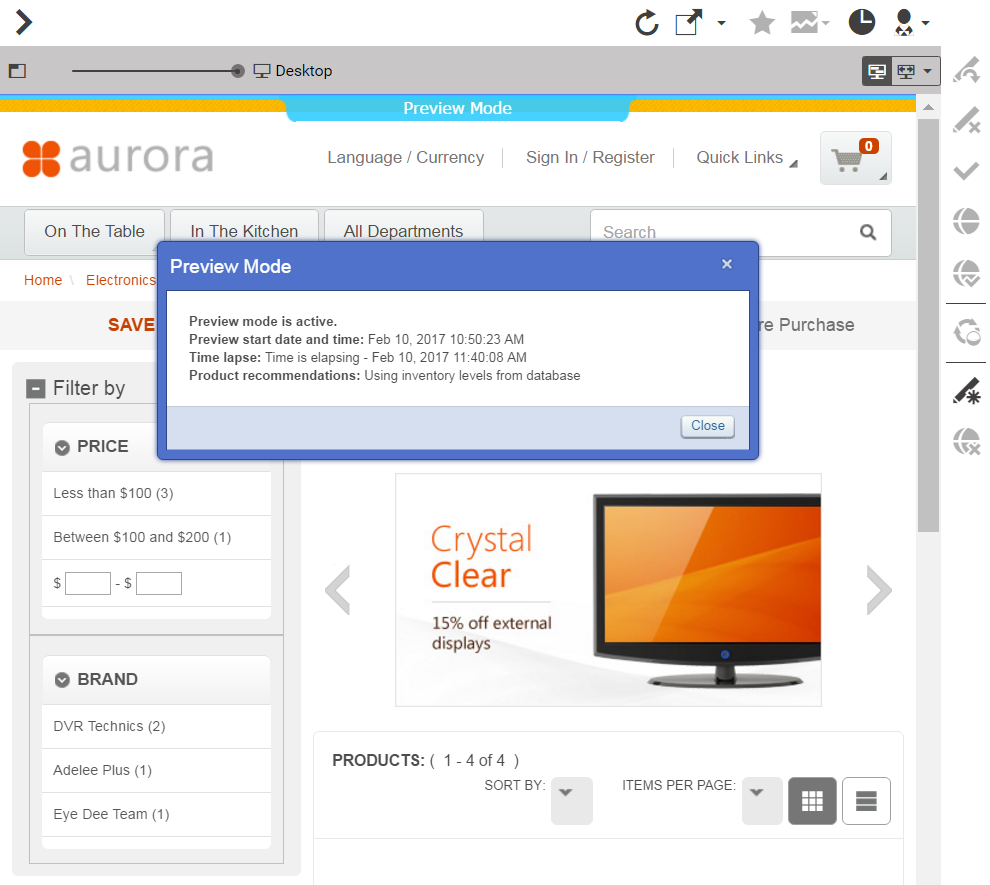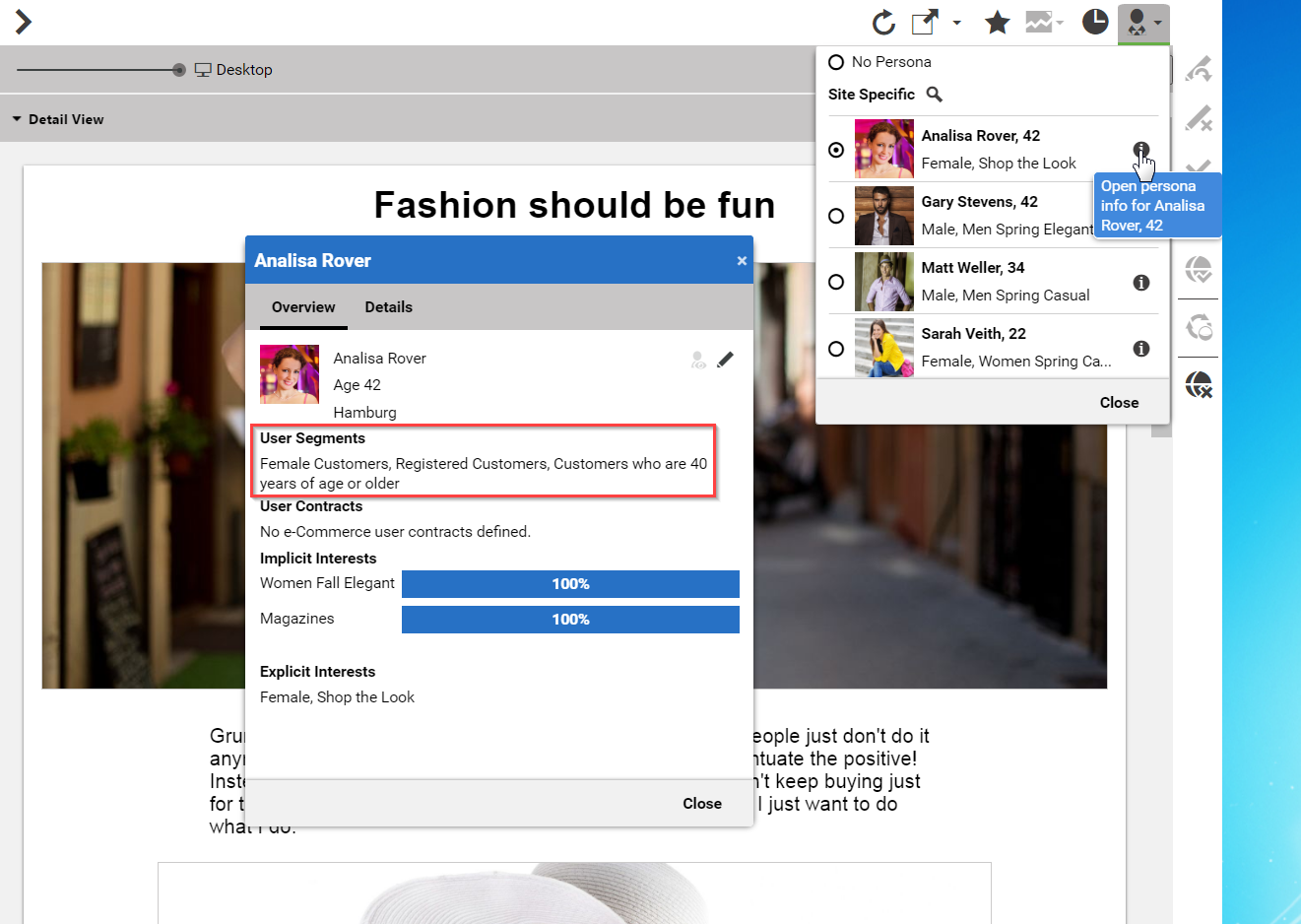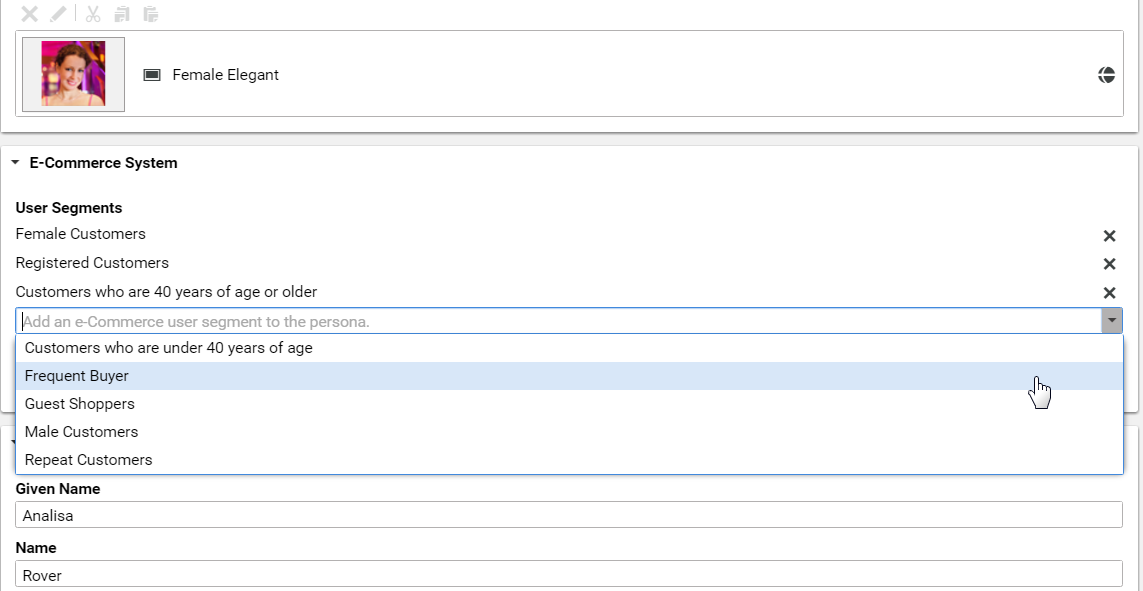Connector for HCL Commerce Manual / Version 2110
Table Of ContentsCoreMedia Studio supports a variety of commerce preview functions directly:
Time based preview (time travel)
When a preview date is set in CoreMedia Studio, it sets the virtual render time to a time in the future. If the currently previewed page contains content from the commerce system, it is desirable that also these content reflects the given preview time. That could be a marketing spot containing activities with different validity time ranges. A specific activity could be valid only after a certain time or a marketing teaser that announces a happy hour could be another example.
If such preview is requested from HCL Commerce the preview date is also sent to HCL Commerce as a genuine HCL Commerce preview token. The HCL Commerce recognizes the transmitted preview date and renders a control on top of the page that lets you inspect the currently active settings. Figure 8.10, “Time based preview affects also the HCL Commerce preview” gives an example.
Customer segment based preview
The commerce segment personalization is not available in HCL Commerce (FEP6).
The feature segment based preview supports the creation of personalized content. In this case, content is shown depending on the membership in specific customer segments. In addition to the existing rules, you can define rules that are based on the belonging to customer segments that are maintained by the commerce system.
These commerce segments will be automatically integrated and appear in the chooser if you create a new rule in a personalized content. For a preview, editors can use test personas which are associated with specific customer segments.
Figure 8.11, “Test Customer Persona with Commerce Customer Segments” shows an example where the test persona is female and has already been registered.
Such preview settings apply as long as they are not reset by the editor.
The test persona document can be created and edited in CoreMedia Studio. The customer segments available for selection will be automatically read from the commerce system. By default, all user segments available in the eCommerce system are displayed for selection. Under some circumstances it may be desirable to restrict the shown user segments, for instance for studio performance reasons or for better clarity for the editor. See Section 3.4, “Configuring The PersonaSelector” in Adaptive Personalization Manual.
For personalized content based on commerce customer segmentation, it depends on the content type, if rules can be applied in the different rendering scenarios. In the case of catalog items, like products and categories, the commerce-led and the content-led scenarios are supported. In the content-led scenario the CoreMedia CAE is responsible for rendering, but the given user ID is also sent to the HCL Commerce. So all content that is received from the HCL Commerce is delivered within the context of the current HCL Commerce user. For marketing spots, the commerce system is responsible for rendering and therefore only the commerce-led scenario is supported.
The commerce segments that the current user belongs to are available during the rendering process within a CoreMedia CAE. Thus, content from the CoreMedia system can also be filtered based on the current commerce segments.
In the other direction, if the personalized content is integrated within a content fragment on a shop page, the current commerce user is also transmitted as a parameter. Thus, the CoreMedia system can retrieve the connected customer segments from the commerce system in order to perform commerce segment personalization within the supplied content fragments.







